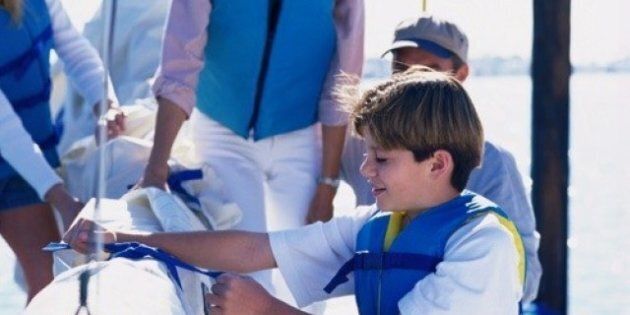
With the heat wave potentially breaking records across Canada, this weekend is sure to invite summer activities like swimming and boating. The rules for water safety are simple to remember, but they're also easy to forget. Every summer, drowning becomes a renewed risk.
The bodies of three teenaged girls were pulled from two different Ontario lakes on Wednesday, and Safe Kids Canada says that drowning is the second leading cause of injury related death for Canadian children.
Barbara Byers is the Public Education Director with Lifesaving Society, a charity dedicated to preventing drowning and water-related injuries by educating the public. Byers says that children under the age of five and adult men between 18 and 49 have the highest risk of drowning.
For toddlers, it's a combination of a lack of skill and a lack of fear. "Those children are absolutely fearless around the water and almost captivated by the water," Byers says. "With that age group, the scenario where they sadly drown is usually in a backyard pool setting." A child under five can drown in as little as one inch of water according to Safe Kids Canada.
Restricting access to water from your child, especially when your home has a pool, is one way to safeguard against an accidental drowning. Byers says it's important for parents to have fencing around the pool that prevents a child from getting in without an adult's help, and having secure locks on the home's exits to a backyard pool.
When you do monitor your child's swimming, a lifejacket is preferred over water wings. "A lifejacket will ensure that if a child falls in the water, they'll be turned right-side-up," Byers says. "Water wings keep their arms floating which really isn't the point."
Drowning is a silent death, and it doesn't take long for a child to find trouble in the water. It's also important not to leave your child in the bathtub or wading pool unattended.
For children between five and 12, getting your child swimming lessons can save their lives. Lifesaving Society offers swimming lessons for toddlers, children and adults with a focus on in-water practice.
For adult men, the danger comes from risk-taking by cliff-jumping or driving a boat too fast. Byers explains that men are also more likely to push the limits of their skills in the water. "Girls would say, 'I don't know if I can do that, I'll wait for you.' The guys are like, 'Let's go,'" Byers says.
Men are also more likely to ignore boating rules by not wearing a lifejacket and drinking while boating or swimming. "Most of us don't get in the car and put a can of beer in the cup holder and start driving. The same laws exist for boating," Byers explains.
In spite of being one of the most basic rules of water safety, many Canadians forget or refuse to wear lifejackets while boating. "We all wear seatbelts because we know it's the law and we won't have time to put it on if we're about to crash," Byers says. "It's the same thing." Being thrown into water isn't the same as diving in by choice, so there's no guarantee that you'll survive the impact.
And when it comes to drinking before or during swimming or boating, the rule is simple: don't. Weather can change, water conditions can become choppy and another boat can come out of nowhere. Just like with driving a car, you need to be able to react fast.
"Know your ability," Byers says. "If you decide to swim out to a raft, it's always farther than it looks. Make sure you know the distance."